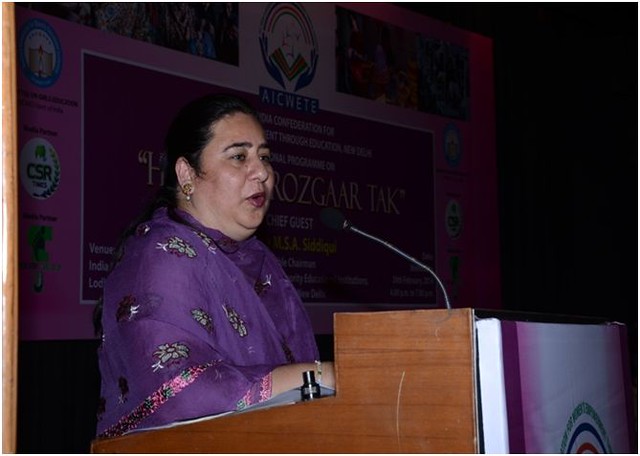By Nivedita Khandekar, TwoCircles.net,
The Indian sub-continent received a unique honour on Friday when Kailash Satyarthi, Indian child rights campaigner, and Malala Yousafzai, Pakistani child education activist, jointly won the Nobel Peace Prize for 2014. We take this occasion to review the Indian scenario vis-à-vis girl child education. Excerpts from an interview with Dr Shabistan Gaffar, who is the president of All India Confederation for Women’s Empowerment Through Education and was also the chair of Committee on Girls’ Education for the National Commission for Minorities Educational Institutions:

Dr Shabistan Gaffar
How is the girl child education scenario in India compared with Pakistan?
Fortunately for us, the general motivation level of parents is much higher towards girls’ education in India as compared with Pakistan. Number of girls enrolling at educational institutions is increasing and over the years and we have seen that girls form almost 80% of the meritorious students, at least at primary and secondary level.
Given this scenario, are things getting better? Where do we stand?
Government has a positive approach. Across ministries, there are schemes and fellowships for girls’ education. It is also coming up with schemes ensuring reservation and relaxation (in criterion) for girls (to encourage education). Now-a-days, even the corporate sector is pitching in with building schools and toilets etc.
What are the challenges for girl education? What more needs to be done?
Challenges remain. For instance, there is not enough female staff. There are very less properly trained teachers at elementary level, where the foundation of these girls’ (life) is laid. We need more awareness. There are some NGOs, some non-profits that work in the field of education in general. But there is lot of scope for sensitization towards girls’ education.
Are there any state-specific problems?
Oh yes, a lot. In West Bengal, poverty is a big hindrance. There, girls are violated, trafficked. In Madhya Pradesh or Rajasthan, issue of safety of girls becomes important as there is no connectivity / access to schools for smaller villages. Even in a state such as Kerala, which has almost 100 % literacy, there is dowry issue that too pertaining to all sections, all religions. Almost all states have some or the other problems.
Do Muslim girls face any particular problems?
Yes, several. There is almost no higher education. Reasons are many – poverty, early marriage and the fact that there is severe lack of colleges for girls. Parents are wary of sending girls to co-ed institutions. These girls are really minority within the minority.
Your thoughts about the rural girls – What is their condition?
Role of a girl, later to be the woman of a household, is very important, especially so in rural areas. So it is utmost important that she is involved in various activities. The latest ‘Swachcha Bharat Campaign’ is a good opportunity to involve girls in villages to keep their neighbourhood clean. After all it is the women who bear the maximum brunt of poor hygiene. Similarly girls can be involved in environmental campaigns such as tree plantations etc. Girl – women – is the foundation of the society. If we can build her, she can build a nation.

